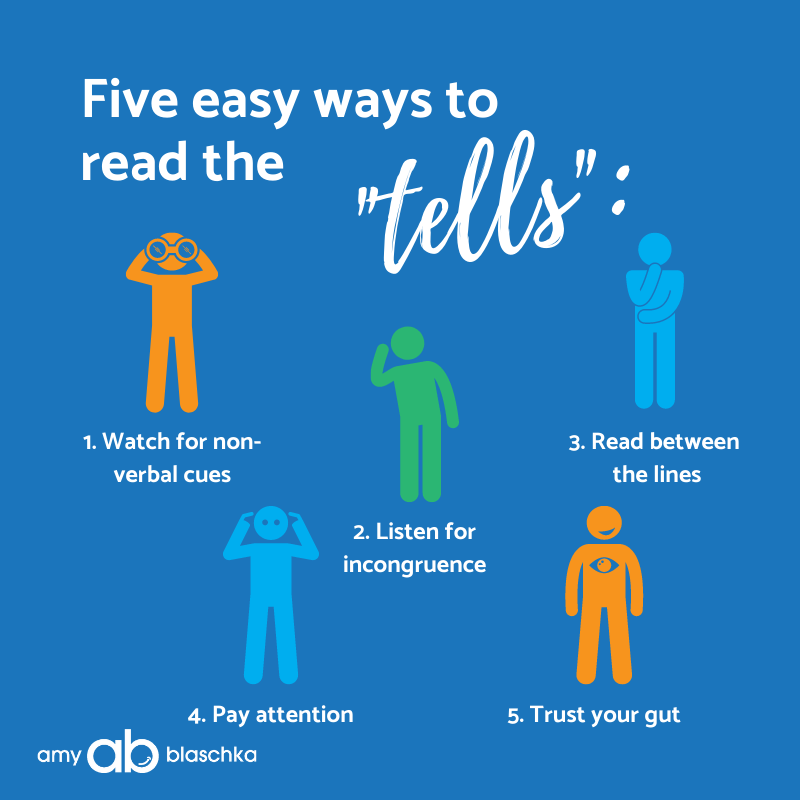Careful, your quiddity is showing
First time here? Welcome to the Illuminate Me tribe! Be sure to check out the website to catch up on previous issues you may have missed.
I recently discovered a word I love: quiddity.
(It’s as much fun to say as it is to read.)
A quiddity is a distinctive feature or peculiarity, as in “many people share the quiddity of eating the middle brownie from the pan” (our daughter Sofia is one of those people). Or even, “her love of K-pop is as much a quiddity as her glossy brown hair” (our other daughter Alexis).
Think of quiddities* as those inherent things that make up our essence and the unconscious tics or quirks that set us apart from others.
One of mine? Sticking my tongue out when I’m focused and in the zone creatively. It’s been my tell since I was a child and something that continues to this day.
A “tell” is a behavior that reveals someone’s true thoughts, intentions, or emotions inadvertently. And the ability to read these signs can be a powerful communication advantage in your career.
Here are five easy ways to do that:
1. Watch for non-verbal cues
Customers with crossed arms as you’re pitching a new concept to them means they probably aren’t open to it. But if they maintain eye contact, lean slightly toward you, or mirror your body language, they like what you’re saying.
2. Listen for incongruence
Ever had a conversation where someone said one thing, but the way they said it seemed off? Or what someone says doesn’t jive with their body language? Notice conflicting cues.
3. Read between the lines
If you and your client have relaxed, conversational email exchanges that suddenly become more formal, it could be a signal that your project has gone off the rails. Have a live conversation to get a handle on what’s happening.
4. Pay attention
When you pay attention, you establish a baseline of verbal and non-verbal behaviors. When they deviate from the norm, you’ll be tipped off when something isn’t quite what it seems and have time to investigate.
5. Trust your gut
Don’t underestimate your gut instinct. If your intuition is telling you something is off, there’s a good chance that it is.
The truth is we often show our quiddities without even realizing it, especially in the professional world. Your behavior defines you and telegraphs your intentions, so it pays to be aware of what you’re projecting to others and whether it aligns with your goals.
For instance, a manager behaves differently than a leader. And if you aspire to be the latter, you’ll definitely want to check out my latest Forbes article on the topic.
Before I go, tell me: what’s your quiddity? Share it in the comments below. (And if you don’t think you have one, ask your friends, family members, and co-workers, who will surely enlighten you with their observations!)
Shine on,
Amy
P.S. Are you a social person? (Who are we kidding? Of course you are—me too!) Find me on Forbes, LinkedIn, Twitter, Instagram, and now, Clubhouse. (No link for that last one. If you’re also there, you can find me at @amyblaschka.)
P.P.S. One more thing: If you think this post would resonate with others, feel free to share it with your friends. Or better yet, invite them to join our Illuminate Me tribe!
*Quiddity has another secondary (and not-so-positive) meaning: an evasion of an argument’s point by raising irrelevant distinctions or objections. When used in this context, you might say, “The politician used a quiddity to avoid answering a question while pretending to answer it, bringing up irrelevant and distracting points.” Or even, “In angling for a later curfew, the sisters cited the quiddities of more middle brownies and K-pop for their parents to enjoy.”









